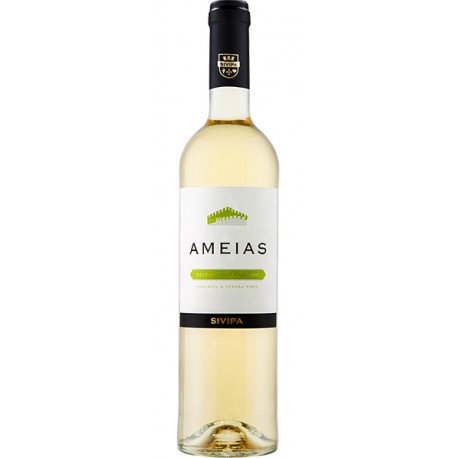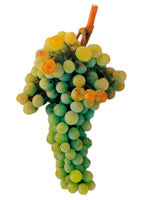 View larger
View larger
White Wine Ameias Branco
SV00710
New product
Setubal Peninsula Regional white wine with citrine color, intense floral aroma, showing the presence of Muscat grape variety.
It’s a white wine fresh, modern and youthful.
Enjoy it with seafood and grilled fish.
Data sheet
| Export Box: | 6 bottles with 75cl |
| Euro Pallet | 100 boxes |
More info
Setubal Peninsula Regional White Wine
Varieties: Muscat and Fernao Pires
Soil/Terroir: Sandy (Fernao Pires) and clay (Muscat)
WINEMAKING: Fermentation at controlled temperature (12 º C), using selected yeasts of terpenic action.
AGEING: No aging
ANALYSIS
Alcohol content: 12.5 % Vol
Total acidity: 4.5 g/l
Total sugar: 2 g/l
Organoleptic Characterization
Visual Appearance: Citrine color.
Appearance olfactory: Intense floral aroma, showing the presence of Muscat grape variety.
Appearance taste: Fresh, modern and youthful.
SERVING SUGGESTIONS: Enjoy chilled to accompany fish, seafood and white meats.
Recommended temperature for tasting: 11-13 ºC
The Grapes
 Fernao Pires
Fernao Pires
Fernao Pires is one of the most widely used Portuguese white grape varietals in the country, its versatility, precocity and richness of aromatic compounds are what make it so popular.
After the Moscatel de Setubal, it is the most widely planted grape in the Setubal Peninsula
It is used in single-varietal wines and blends, having good results in the production of sparkling, fortified, as well as late harvest wines.
Its aromatic profile exhibits tropical fruit, lemon, lime, orange, tilia, rose and other lemony herbs.
 Moscatel de Setubal - Muscat
Moscatel de Setubal - Muscat
This variety is known to have originated in Egypt, having spread to the Mediterranean from Alexandria, possibly during the period of the Roman Empire (Galet 1985).
It is a grape of average strength and has a difficult flowering and fertilization, prone to not fruiting after flowering.
Resistant to dryness, it's sensitive to mildew and powdery mildew.
There are various types of Moscatel in the world (ex. the French Muscat, the Italian Moscato), and all of them with a significant concentration of aromatic (terpene) and flavor components. However, it's the Moscatel de Setubal that has the best concentration and richness of these components.
The typical aromas of Moscatel are well-known: citrus flowers and zest, honey, lime, rose, lychee, pear, date and raisin, which create memorable wines.
The Region
The Setúbal Peninsula is a unique region, whose wines are as generous and balanced as the region that sees them born.
Mother Nature was magnanimous and refined: from with the two peninsulas, “drawn” by the two largest estuaries in Portugal, was born a region rich in biodiversity and fish and shellfish with both natural and protected areas.
The framing by the Atlantic Ocean and the Tagus and Sado River estuaries, combined with a deep Mediterranean influence and geological formation provide a unique set of characteristics for wine production.
The Setúbal Peninsula also has one of the oldest denominations in Portugal - the region of Moscatel de Setúbal, whose demarcation was begun in 1907 and completed and confirmed in 1908.
The Setúbal DO (Denomination of Origin) region is geographically bounded by the municipalities of Setúbal, Palmela, Montijo and the village of Castelo in the municipality of Sesimbra.
This "terroir", which is the cradle of the Moscatel de Setúbal is unique: the joint annual rainfall of 550-750 milliliters and the 2,200 hours of sunshine poured over the sandy and clay – limestone soils is all seasoned with a handful of Atlantic breeze.





